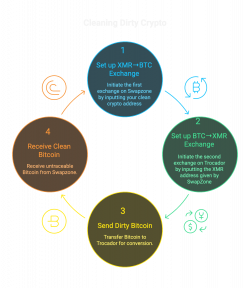
Every fraudster who's gotten caught lately wasn't caught via their VPN, not even their OPSEC, or not even using their real name (shoutout to that retard Lucas from Nulled). It was their crypto trail.
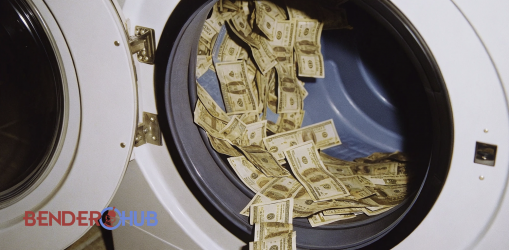
The blockchain is completely transparent. Every transaction, every wallet, every move - it's all there on the public ledger. Chainalysis and similar companies are making millions helping law enforcement track Bitcoin from point A to point B.
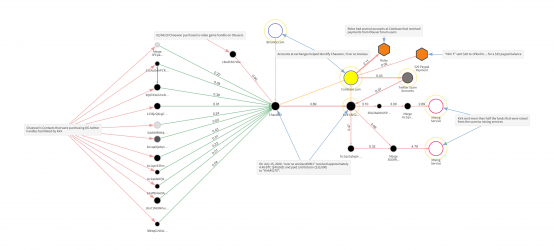
I've written about mixers and tumblers before, but a lot of them are clunky, slow, and probably honeypots. Today's method is different: fast, simple, and it actually works.
The secret ingredient for today is Monero. While Bitcoin is surveillance money, Monero is what Bitcoin pretended to be.
I've covered Monero in depth before (check out "Monero Essentials: A Carders Handbook" for the full breakdown), but here's why it's perfect for cleaning crypto. Unlike other "privacy" coins with their half-assed implementations, Monero was built from the ground up for one thing: keeping your transactions invisible. Ring signatures mix your transaction with decoys, stealth addresses create one-time destinations for every transaction, and RingCT hides the amounts completely. The result is a blockchain that gives investigators absolutely nothing to work with.
The Double-Exchanger Method
The method is elegantly simple: convert your Bitcoin (or any other coins) to Monero, then convert that Monero back to a different wallet. You're essentially running your coins through a privacy blackout - dirty Bitcoin (or other coins) goes in one side, clean Crypto comes out the other.
But here's the important thing: never use the same exchanger for both legs.
Using one exchanger to handle both conversions is like washing your car at the same place you robbed - they see everything. Bitcoin in, Monero out, new Bitcoin generated. They've got timestamps, amounts, wallet addresses. You just handed them your entire operation on a silver platter.
The solution is to link two different exchangers together. First exchanger only sees BTC→XMR. Second exchanger only sees XMR→BTC. Neither has the complete picture, and that Monero bridge between them makes everything invisible.
Your Tools: Trocador and Swapzone

For this method, I recommend Trocador for your BTC→XMR conversion and Swapzone for the XMR→BTC leg. We're using Trocador first since they offer anti-KYC insurance - if an exchanger suddenly holds your coins hostage demanding documents, Trocador will pay you back.
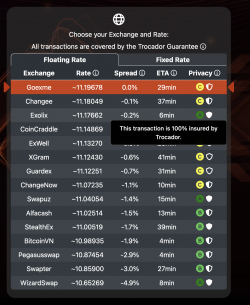
Swapzone handles the return trip beautifully with their clean interface and rate aggregation from multiple services, ensuring you don't get ripped off on the exchange rates.
Here's the critical part: both Trocador and Swapzone are aggregators - they don't exchange coins themselves, they connect you to actual exchangers like ChangeNOW, SimpleSwap, Godex, etc. Since they share many of the same exchanger partners, you must select different exchangers on each platform. If you use ChangeNOW on Trocador, pick literally any other exchanger on Swapzone. Using the same exchanger defeats the entire purpose - you just gave them both legs of your transaction.
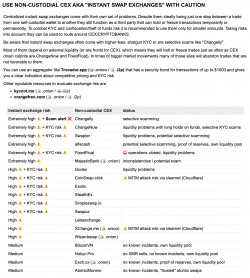
We use Trocador specifically for the BTC→XMR leg because that's where KYC ambushes happen. Once you're in Monero, the second leg (XMR→BTC) can't possibly trigger compliance flags since the exchanger literally cannot see where those XMR came from. The blockchain is hidden and they're receiving mystery Monero from the void.
Making It Happen
Start backwards - that's the trick. Hit Swapzone first and set up your XMR→BTC (OR ANY COIN) exchange. Calculate how much Monero you'll be sending (not getting it perfect is fine, as these are floating values, you can also check on Trocador how much quotes the exchangers are offering you), pick an exchanger from their list, and grab the Monero deposit address they generate. This address is your bridge between the two platforms.
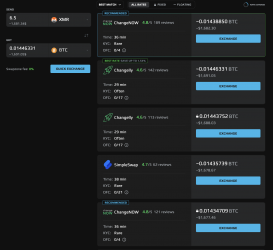
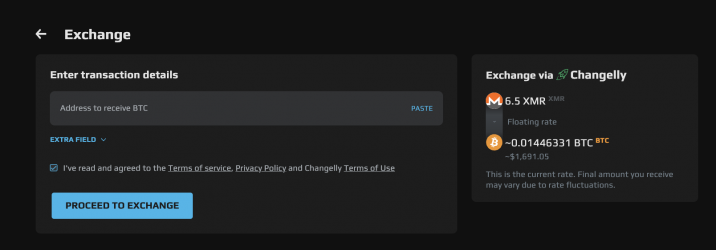
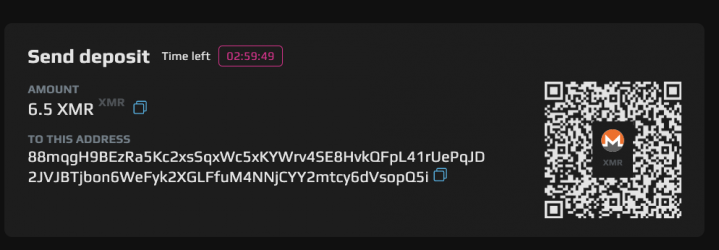
Now head to Trocador and set up your BTC→XMR exchange. The critical rule of not using the same exchanger matters here. Pick any exchanger except the one you just used on Swapzone. When Trocador asks for your Monero destination, paste that Swapzone address you just copied.
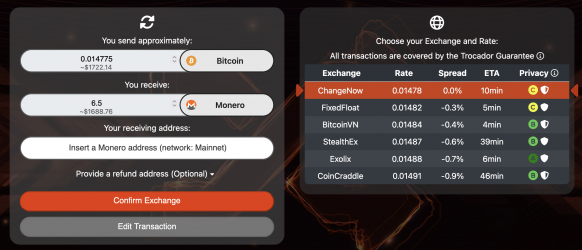
Send your Bitcoin to Trocador and watch the magic happen. Your BTC gets converted to XMR and sent directly to Swapzone, which receives untraceable Monero and sends fresh Bitcoin to your clean wallet. About 5-10 minutes from start to finish.
The Reality Check
This isn't NSA-proof. If you're moving millions in criminal proceeds, you need better solutions.
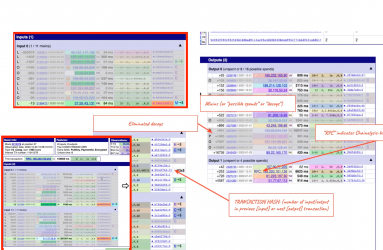
The main vulnerabilities come down to patterns - timing correlation when both exchanges happen within minutes of each other, amount correlation if you're moving exact or recognizable amounts through the system, and the critical mistake of accidentally selecting the same exchanger on both platforms, which hands them your entire transaction flow on a platter.
This creates enough confusion that investigators will find easier targets. They're not burning resources to track your $5k through two exchangers and Monero unless you're already on their radar.
Bottom Line
This double-exchanger method hits the sweet spot between security and usability. No complex software, no three-day mixing cycles, no sketchy tumblers that might be honeypots. Just two exchangers, one privacy coin, and 5-10 minutes of your time.
The goal here isn't perfect anonymity - it's creating reasonable doubt and making yourself more expensive to track than you're worth. This method accomplishes exactly that. For most people moving reasonable amounts, this creates enough friction in the investigative process that resources get allocated elsewhere.
Stay paranoid, stay profitable, and for fuck's sake, check BinX out. d0ctrine out




